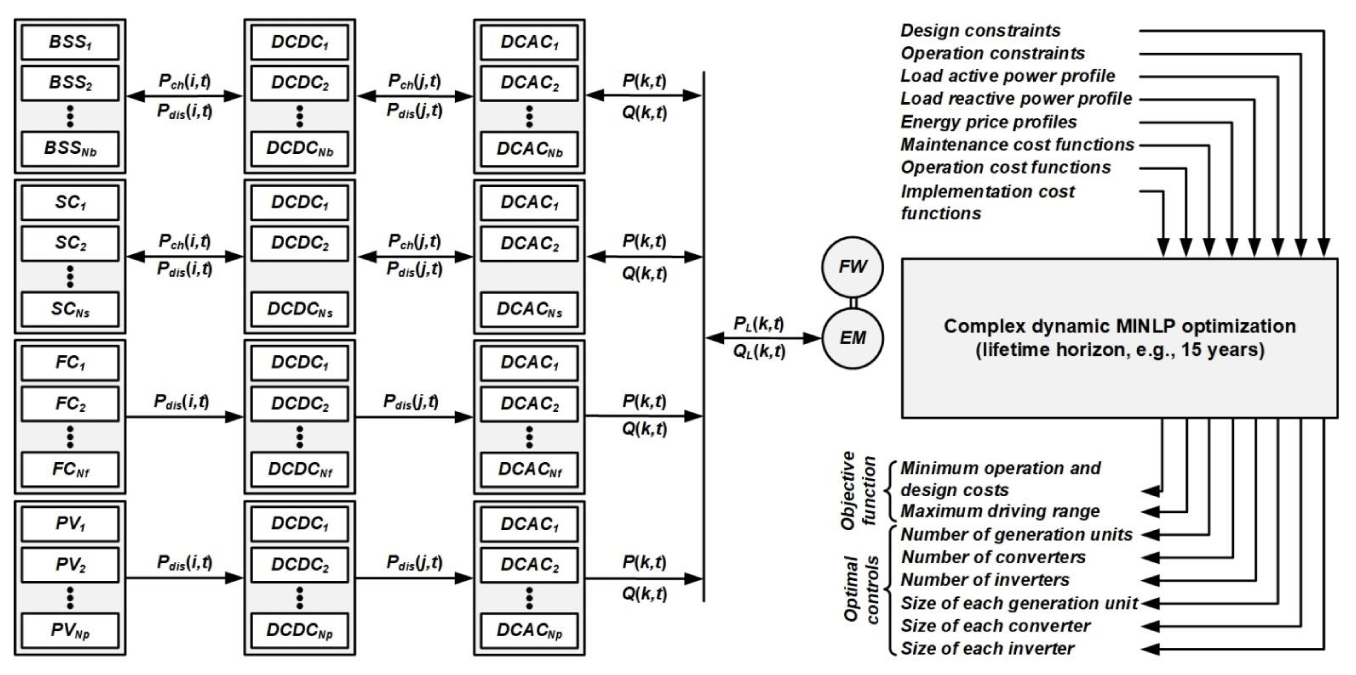Trends in Computer Science and Information Technology
Optimal E-Powertrain Solutions for Future Electric Vehicles
Erfan Mohagheghi1*, Joan Gubianes Gasso1 and Pu Li2
2Department of Process Optimization, Ilmenau University of Technology, Ilmenau, Germany
Cite this as
Mohagheghi E, Gasso JG, Li P (2020) Optimal E-Powertrain Solutions for Future Electric Vehicles. Trends Comput Sci Inf Technol 5(1): 042-043. DOI: 10.17352/tcsit.000018Owing to increasing emission specification, decreasing price of energy storage systems and power electronic devices, in addition to fast-developing technology, Electric Vehicles (EVs) will become a significant share of automotive market in the near future [1]. Therefore, there is a huge competition among car manufacturers to produce EVs. The final price and driving range are known as vital factors to win the competition. For this purpose, e-powertrain of EVs should be efficiently designed and managed to maximize the driving range [2,3] while the total costs (including implementation, operation, maintenance and replacements) be minimized [4]. A complex multi-objective dynamic Mixed-Integer Nonlinear Programming (MINLP) optimization problem [5-11] needs to be solved to achieve this goal. The major reason of the complexity lies in the hybridization of EVs with different types of power sources [12-17] e.g., Battery Storage Systems (BSSs), Supercapacitors (SCs), Fuel cells (FCs), Photovoltaic (PV) modules, and flywheels (FWs) (Figure 1). BSSs are used for their high energy density, while FWs and SCs are utilized mostly due to their high power density supplying transient active-reactive power demand. FCs and PV modules work to generate power without exposing pressure to energy grid. As shown in Figure 1, these sources are connected to the Electric Machine (EM) through different DC/DC and DC/AC converters enabling the EM to consume/generate active-reactive power. The efficiency of all these components varies based on their size and load profiles. Therefore, the optimization problem aims to minimize the operation costs (probabilistic) during the lifetime of EV (e.g., 15-year prediction horizon) and the initial costs (deterministic) by finding both the size and the number of all components while satisfying operation and design constraints.
- Dominković DF, Bačeković I, Pedersen AS, Krajačić G (2018) The future of transportation in sustainable energy systems: Opportunities and barriers in a clean energy transition. Renewable and Sustainable Energy Reviews 82: 1823-1838. Link: https://bit.ly/31GoR3b
- Thibault L, De Nunzio G, Sciarretta A (2018) A unified approach for electric vehicles range maximization via eco-routing, eco-driving, and energy consumption prediction. IEEE Transactions on Intelligent Vehicles 3: 463-475. Link: https://bit.ly/3lrFd7v
- Conlon BM, Holmes AG, Tate ED (2011) Range maximization of a hybrid vehicle operating in an electric vehicle operating state. In Google Patents.
- Li H, Zhou Y, Gualous H, Chaoui H, Boulon L (2020) Optimal Cost Minimization Strategy for Fuel Cell Hybrid Electric Vehicles Based on Decision Making Framework. IEEE Transactions on Industrial Informatics. Link: https://bit.ly/2Qz84IQ
- Mohagheghi E, Alramlawi M, Gabash A, Li P (2018) A survey of real-time optimal power flow. Energies 11: 3142. Link: https://bit.ly/3hFSZB5
- Mohagheghi E (2019) Real-Time Optimization of Energy Networks with Battery Storage Systems under Uncertain Wind Power Penetration. Technische Universität Ilmenau. Link: https://bit.ly/2QyFJm4
- Mohagheghi E, Alramlawi M, Gabash A, Blaabjerg F, Li P (2020) Real-time active-reactive optimal power flow with flexible operation of battery storage systems. Energies 13: 1697. Link: https://bit.ly/3lrak2S
- Mohagheghi E, Gabash A, Alramlawi M, Li P (2018) Real-time optimal power flow with reactive power dispatch of wind stations using a reconciliation algorithm. Renewable Energy 126: 509-523. Link: https://bit.ly/34DjxPT
- Mohagheghi E, Gabash A, Li P (2017) A Framework for Real-Time Optimal Power Flow under Wind Energy Penetration. Energies 10: 535. Link: https://bit.ly/2YHETHM
- Tawarmalani M, Sahinidis NV (2013) Convexification and global optimization in continuous and mixed-integer nonlinear programming: theory, algorithms, software, and applications. Springer Science & Business Media 65.
- Alramlawi M, Mohagheghi E, Li P (2019) Predictive active-reactive optimal power dispatch in PV-battery-diesel microgrid considering reactive power and battery lifetime costs. Solar Energy 193: 529-544. Link: https://bit.ly/3b5CGLm
- Fathabadi H (2018) Novel fuel cell/battery/supercapacitor hybrid power source for fuel cell hybrid electric vehicles. Energy 143: 467-477. Link: https://bit.ly/2ECRx42
- Fu Z, Li Z, Si P, Tao F (2019) A hierarchical energy management strategy for fuel cell/battery/supercapacitor hybrid electric vehicles. International Journal of Hydrogen Energy 44: 22146-22159. Link: https://bit.ly/3gCQ76T
- Khaligh A, Li Z (2010) Battery, ultracapacitor, fuel cell, and hybrid energy storage systems for electric, hybrid electric, fuel cell, and plug-in hybrid electric vehicles: State of the art. IEEE transactions on Vehicular Technology 59: 2806-2814. Link: https://bit.ly/2DcxyZy
- García P, Torreglosa JP, Fernández LM, Jurado F (2013) Control strategies for high-power electric vehicles powered by hydrogen fuel cell, battery and supercapacitor. Expert Systems with Applications 40: 4791-4804. Link: https://bit.ly/2EFdhMC
- Wu Y, Gao H (2006) Optimization of fuel cell and supercapacitor for fuel-cell electric vehicles. IEEE transactions on Vehicular Technology 55: 1748-1755. Link: https://bit.ly/2QwyL0T
- Fronek PA (1998) Vehicle top solar power generator. In Google Patents .
Article Alerts
Subscribe to our articles alerts and stay tuned.
 This work is licensed under a Creative Commons Attribution 4.0 International License.
This work is licensed under a Creative Commons Attribution 4.0 International License.


 Save to Mendeley
Save to Mendeley
